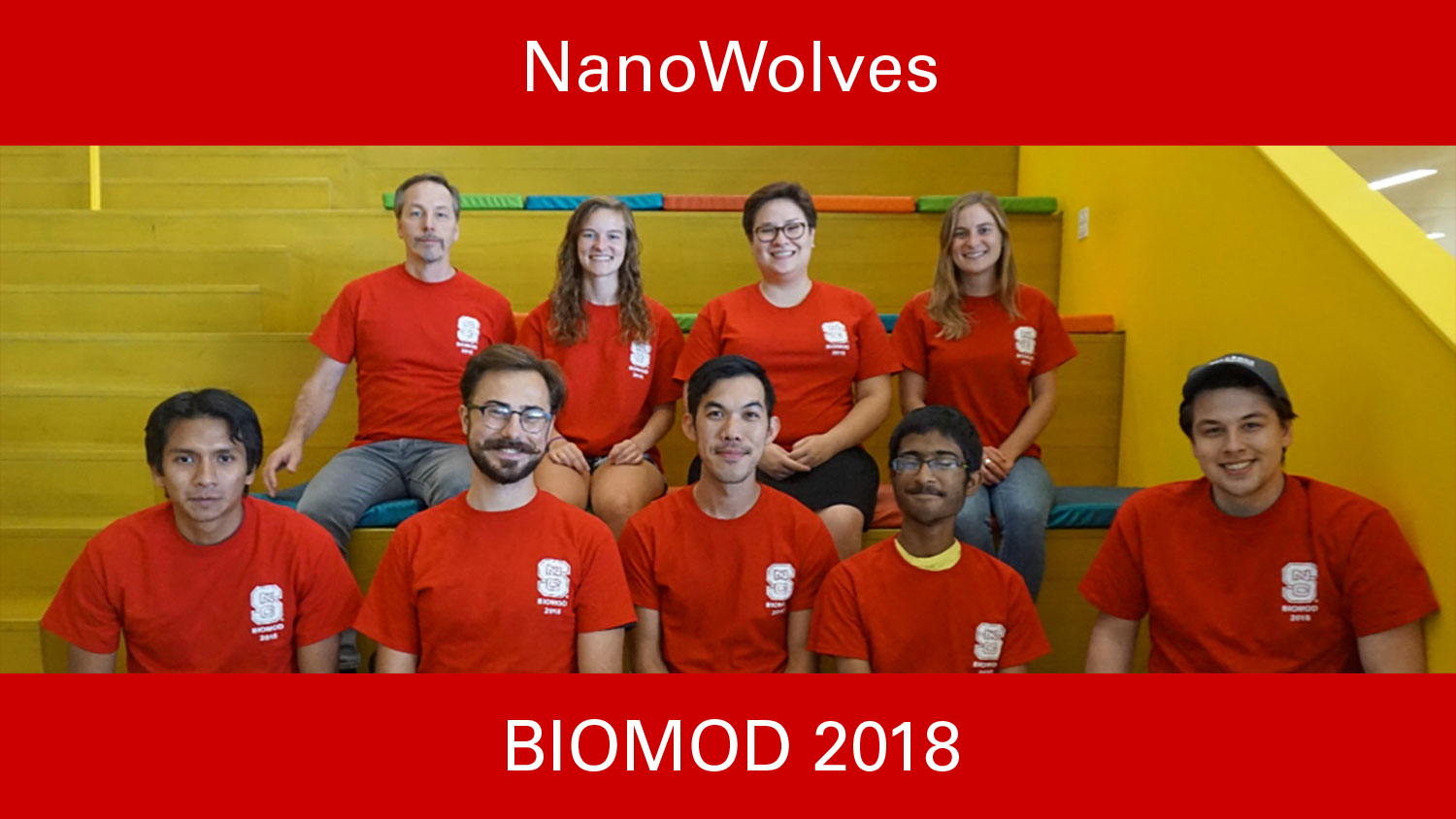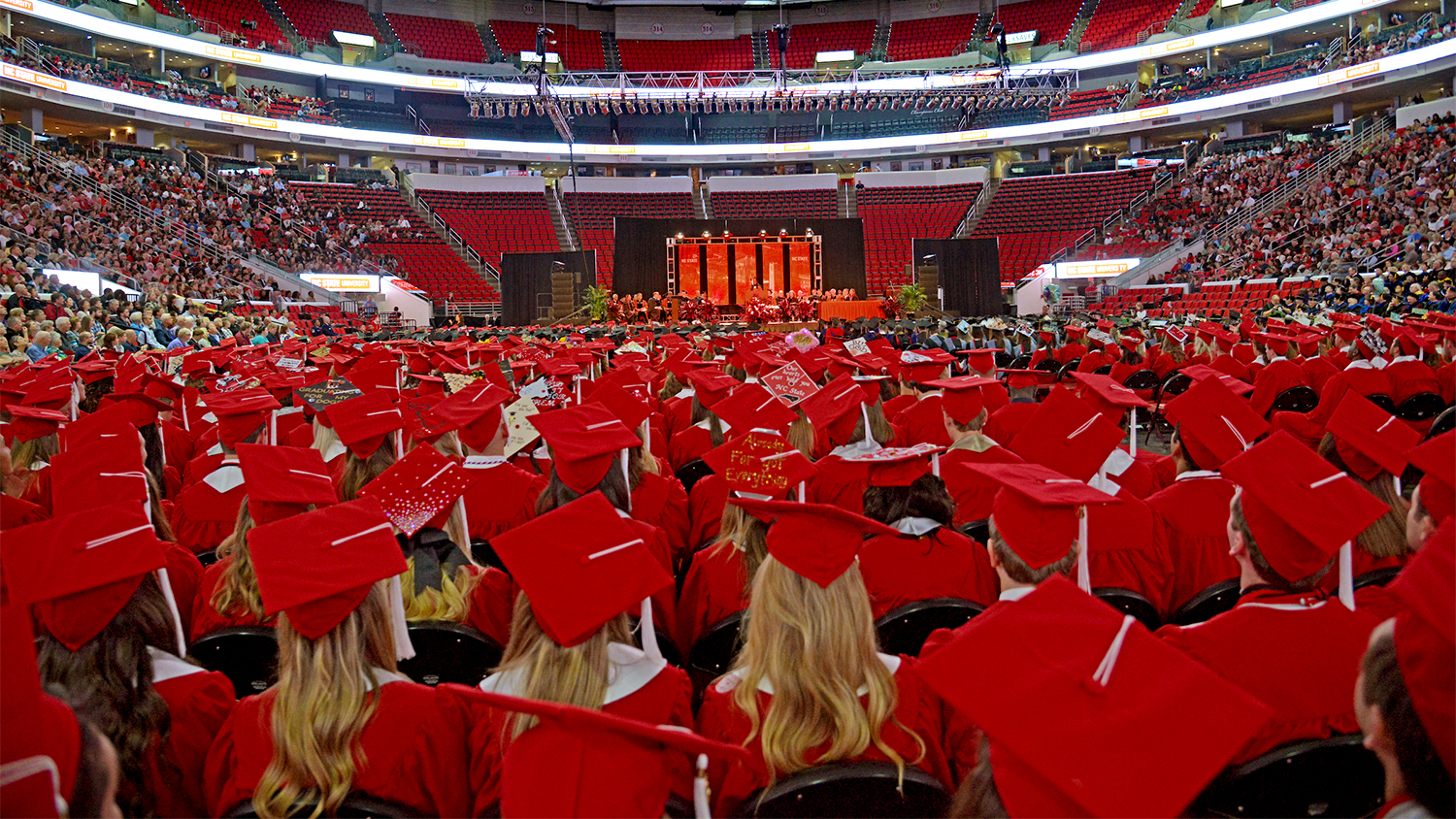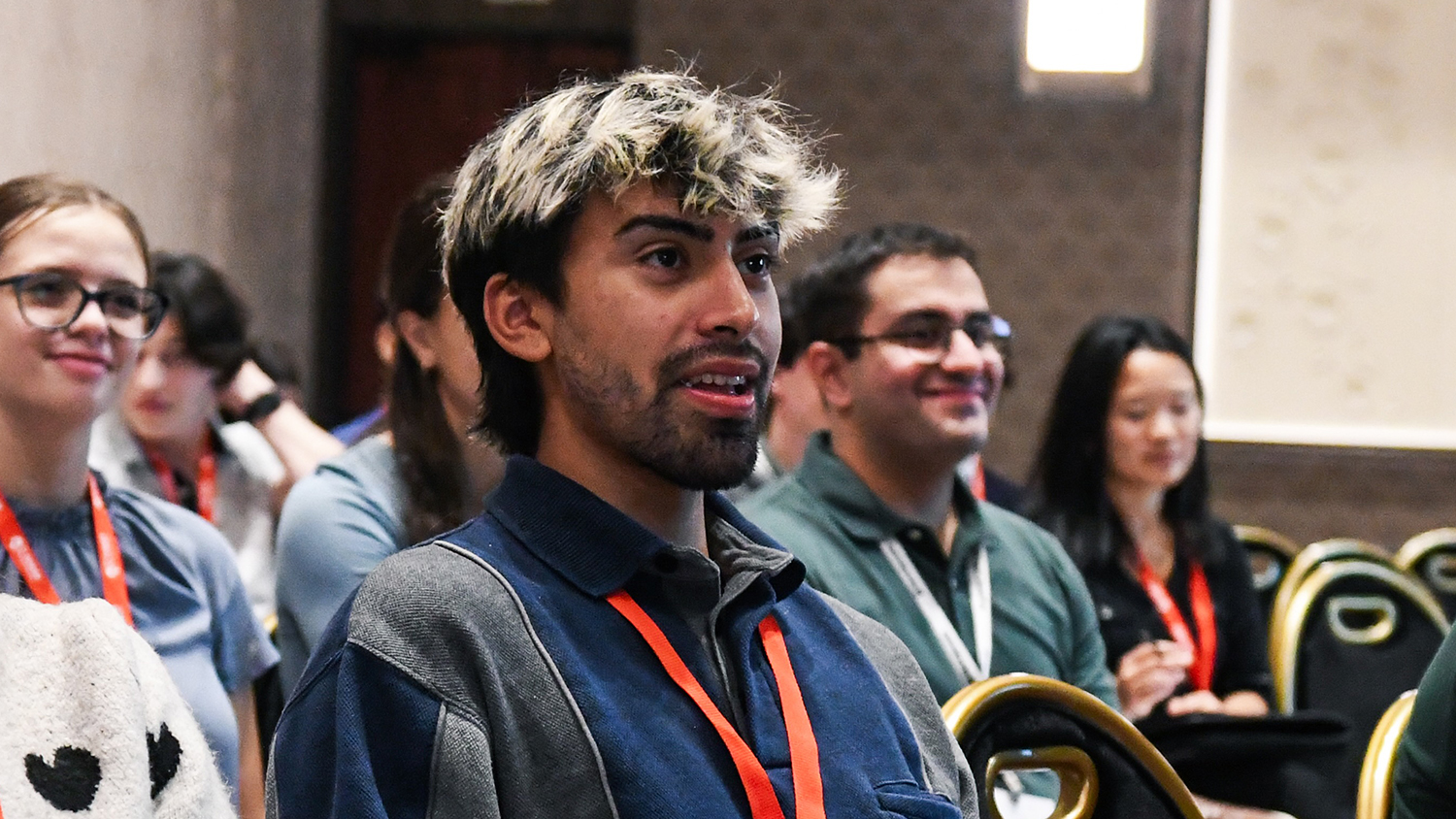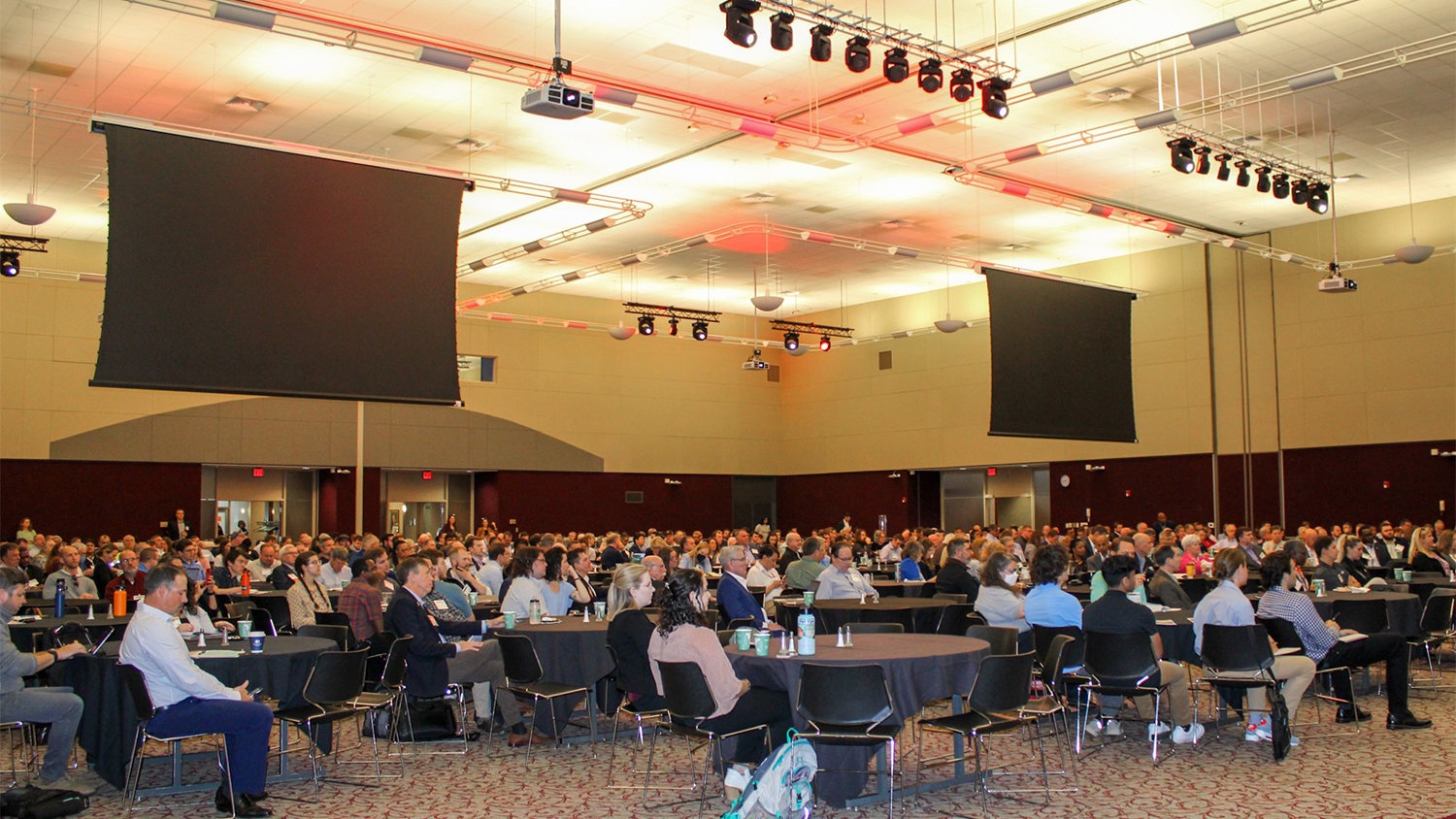NC State NanoWolves team brings home five awards in Biomolecular Design competition

The NanoWolves, a team of six NC State students, won five prizes at BIOMOD, an international biomolecular design competition held at University of California San Francisco.
The team is comprised of students from the departments of Materials Science and Engineering, Biomedical Engineering, and Physics at NC State, as well as a student from Enloe High School in Raleigh. Their award-winning project involved the design, production, and testing of an anticoagulant based on RNA origami.
BIOMOD is an international biomolecular design competition for undergraduate students that was established at the Wyss Institute of Harvard University in 2011. This year, 20 teams with more than 100 students from the Americas, Europe, Asia, and Australia created innovative biomolecular design projects and implemented them in the laboratory during the summer months.
The NanoWolves team demonstrated a functional, self folding RNA origami that can be used to inhibit the coagulation of blood. The team presented its research to a live audience with a theme of “Red Riding Hood and the NanoWolves” and won five awards:
- 2nd Place Grand Prize, Overall Score
- Best Live Performance by Audience Choice
- 2nd Place Project Website
- 3rd Place Live Performance
- Gold Prize
Anticoagulant drugs save the lives of millions of patients with medical problems such as thrombosis, pulmonary embolism, undesired blood clots in the vital organs, and clotting control during surgery. Traditional anticoagulants such as warfarin and heparin are commonly used in clinic settings. However, they have life threatening side-effects and a high risk of tissue hemorrhage. It has been estimated that more than 65,000 patients are treated every year in U.S. emergency departments from warfarin-related hemorrhage. The NanoWolves team has created an alternative, novel anticoagulant composed of RNA origami carrying RNA aptamers which provides benefits over traditional anticoagulant drugs.
RNA is a programmable biomacromolecule, meaning it is a polymer that is able to fold itself into a specific structure based solely upon its designed nucleotide sequence. During the summer, we designed and tested the folding of RNA computationally, and demonstrated the anticoagulation activity of RNA origami in the laboratory. (Further information can be found at NanoWolves.org) Additionally, we were able to reverse the anticoagulation effects of our drug by the addition of complementary DNA antidotes that set the coagulation cascade back to normal. The NanoWolves project paved the way for development of RNA origami for surgical applications.
Through the BIOMOD competition, the NanoWolves not only designed and implemented a fun project, but also contributed brand new ideas and knowledge to the field of bionanotechnology, said Dr. Thom LaBean, professor in the Department of Materials Science and Engineering and advisor to the group. After the excitement and success at BIOMOD, the NanoWolves are continuing to develop their project for clinical use by scaling up production, so that larger amounts of the anticoagulant will be available for testing in animal models. Plans are also in the works to advance RNA origami-based inhibitors for other therapeutic applications, such as HIV therapy.
“BIOMOD was an opportunity for the students to gain hands-on experience in both theoretical and experimental biomolecular design and testing,” LaBean said. “They were able to contribute creative solutions to research problems and to execute a valuable biomolecular design project significance for the development of future applications of DNA and RNA nanotechnology. These young students will be marvelous assets for the future development of diverse science and technology.”
The NanoWolves project would not have been possible without kind support from Danish collaborators including Prof. Ebbe S. Andersen’s group and Prof. Jørgen Kjems’ group at the Interdisciplinary Nanoscience Center (iNANO) at Aarhus University. This project was financially supported by grants from the National Science Foundation.
- Categories:


